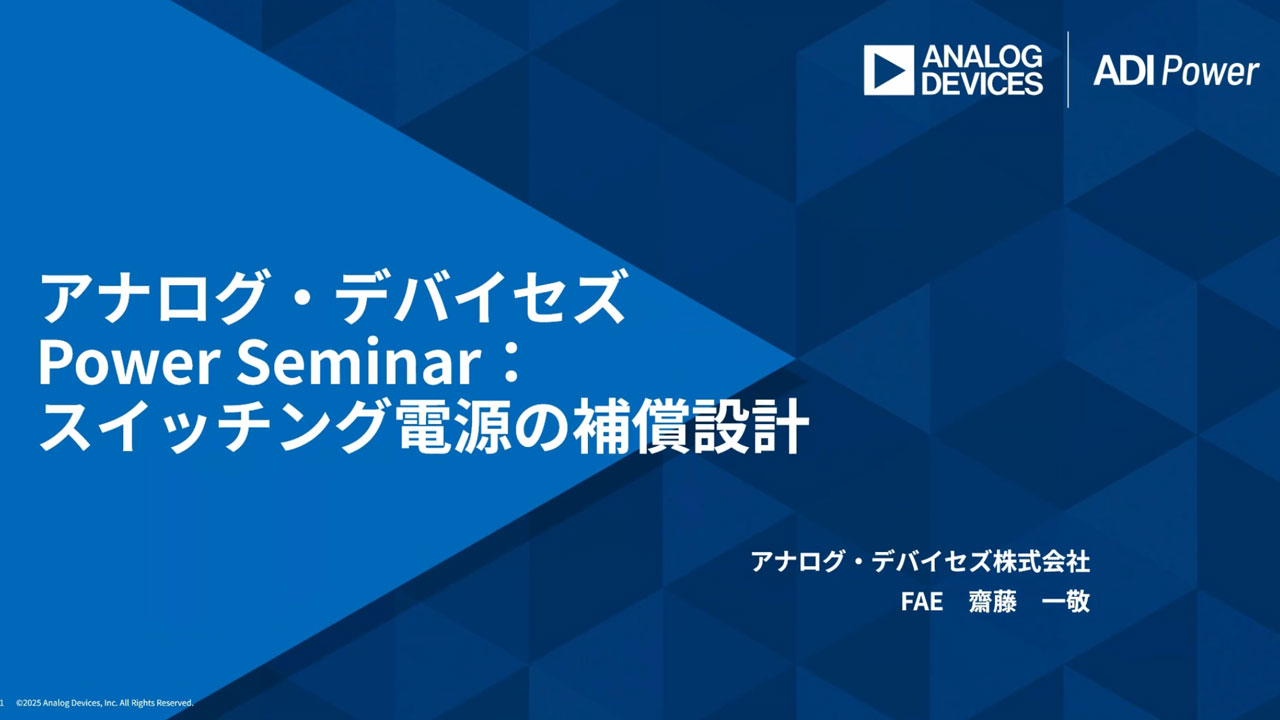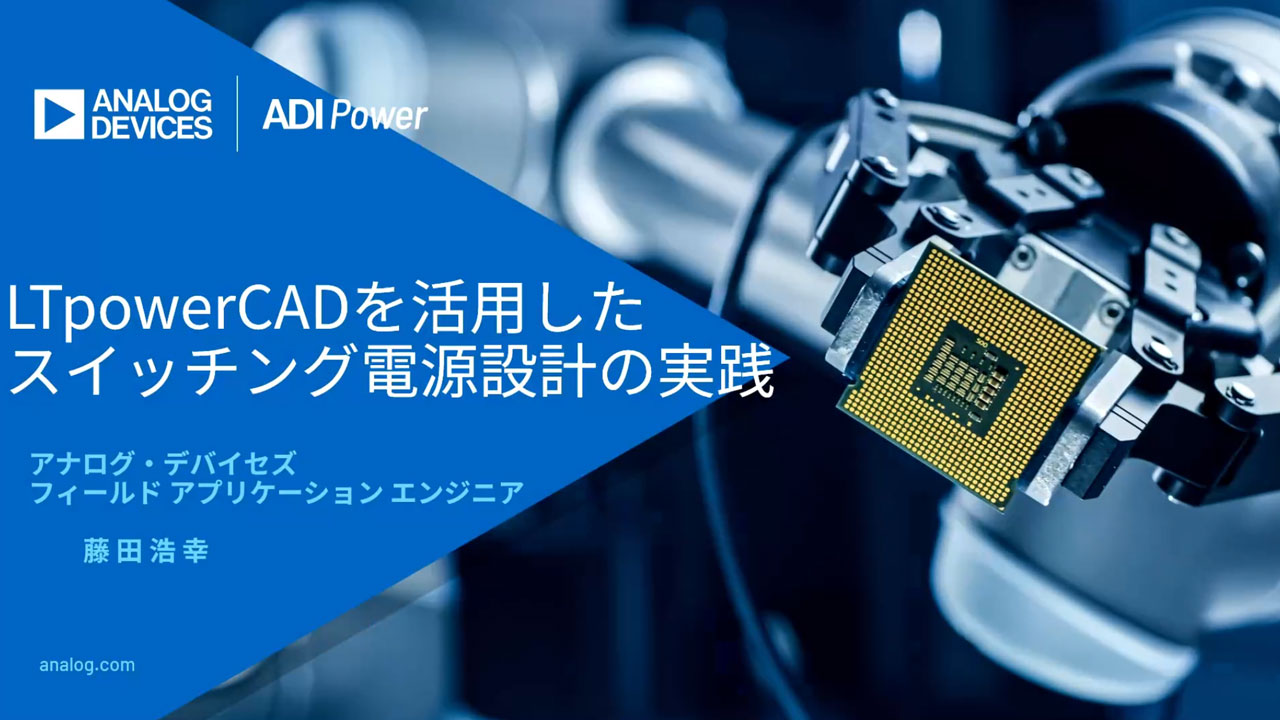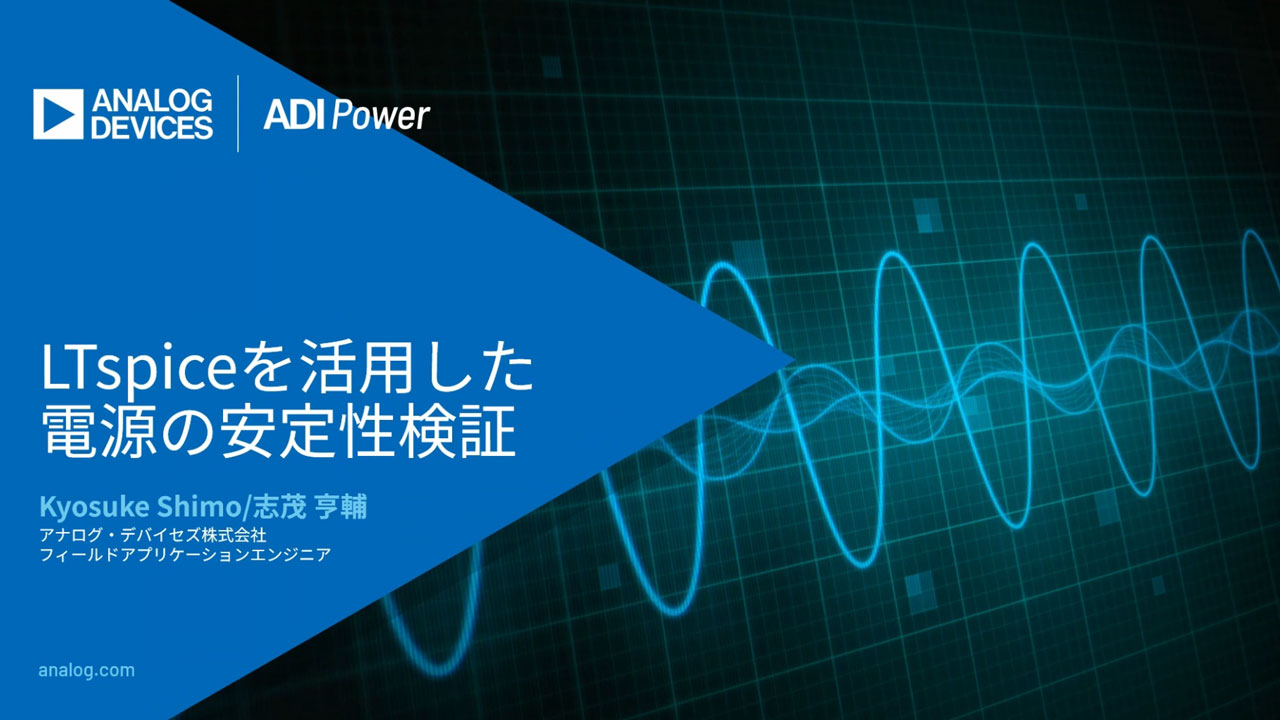Addressing the Challenges of High-Voltage Automotive Power Applications
要約
Inside today’s vehicles, always-on digital instrument clusters, infotainment hubs, and fusion electronic control units (ECUs) are among the applications that require high levels of computing power from the processors. Managing their power supplies, therefore, calls for a careful balance to ensure low power consumption, high efficiency, and electromagnetic interference (EMI) mitigation. This paper examines how multiphase high-power buck controllers and buck converters can address the design challenges of high-voltage automotive power applications.
Introduction
The first electronic instrument cluster dates back to the late 1970s, available in the Aston Martin Lagonda and then the Cadillac Seville. By the 1980s and 1990s, these displays had become an option in many vehicles and standard on some luxury models. But the trend soon reversed because of limitations in visibility and cost to repair. With the emergence of hybrid and electric vehicles has come a resurgence of the digital instrument cluster1. Today's instrument clusters go beyond providing information like speedometer and odometer readings, outside temperature, and fuel levels. For example, BMW recently unveiled a next-generation digital instrument cluster that delivers customized, personalized, real-time information about various aspects of vehicle and engine performance.
The automotive cockpit electronics market—including clusters, heads-up displays (HUD) (shown in Figure 1), infotainment, and navigation—is constantly evolving. By 2022, the global market is expected to grow to US$51.54 billion, representing an 8.6% CAGR from 2017 to 2022, according to analyst firm Research and Markets. These applications have aspects, such as the clock and internal memory, that are always running in the background, even when the vehicle is turned off. As such, designing digital cockpit electronics comes with various challenges that must be addressed at the power supply level. On the one hand, you need to be able to drive the higher power metal-oxide-semiconductor field-effect transistors (MOSFETs) that provide the power switching inside the digital ICs delivering the compute power that these types of applications require. At the same time, you need to manage parameters such as power consumption, efficiency, EMI, and solution size in order to generate the performance needed. Similar considerations are in play for other high-voltage automotive power applications, like USB hubs and point-of-load systems.
In this paper, we'll take a closer look at the key design considerations and highlight techniques for designing power supplies suitable for high-voltage automotive power applications.

Figure 1. Heads-up displays are among the vehicle subsystems that require high levels of compute power—and efficient power supplies to manage the processors running these applications.
Driving Higher Power Requirements
The sophisticated algorithms and massive amounts of computations needed to deliver capabilities like navigation and advanced driver assistance systems (ADAS) demand increasingly higher compute power in vehicles. As the automotive industry moves toward Level 5 fully autonomous vehicles, this trend will only continue. In the not-too-distant past, the typical automotive system-on-chip (SoC) consumed 20W of power. Today, this number is more likely to reach hundreds of watts from multiple chips. Note the Nvidia DRIVE Pegasus AI computing platform, which the company calls the world's first artificial intelligence (AI) car supercomputer designed for fully autonomous Level 5 robo taxis. Pegasus was designed to deliver 320 trillion operations per second of processing performance for about 500W2.
With the SoCs consuming higher power, power supplies need increased gate drive, dynamic voltage scaling, and superior transient performance to optimize performance. For buck controllers, this creates the need for a strong gate drive that can drive input for the gate of a high-power MOSFET.
Managing Efficiency, Power Consumption, and Temperature
At the high frequencies in which these high-voltage applications run, every percentage of efficiency makes an impact, since higher frequencies induce more switching losses. Highly efficient components, therefore, are a must, especially when you consider the increasing number of ECUs inside the modern vehicle. One path to higher efficiency is to use power supply ICs with low quiescent current (standby current). Given that instrument clusters have always-on parts like the internal memory, the CAN transceiver, and the clock, keeping the standby current at a minimum level lowers overall power consumption.
Temperature management is also important for high-voltage applications, especially instrument clusters. If the junction temperature gets too hot, this can degrade the LED lights and color in the display. (Plus, the combination of high frequency plus high operating temperatures—not uncommon in vehicles—is a big hit on efficiency.) Yet, some components, including those in the power supply, can dissipate a lot of heat. Choosing power-management ICs that are designed to provide good thermal performance and minimal power loss involves a look at the device package. For example, the bond wires that exist in most ICs today increase drain-source on resistance (RDSON) , causing more power loss. A die that is directly connected to the package, therefore, minimizes power loss and improves efficiency. Maxim, for example, has introduced new flip-chip packaging that helps solve this issue by placing the die directly on the lead frame. This approach helps reduce the RDSON and parasitic inductance for better electromagnetic interference (EMI) performance. See Figure 2 for a chart showing the efficiency gains of the new flip-chip packaging versus traditional packaging.

Figure 2. Efficiency gains of flip-chip packaging over traditional packaging.
Mitigating EMI
In the harsh automotive electrical environment, mitigating EMI is an essential part of preventing the interference from impacting the performance of the various subsystems inside the vehicle. RF electrical noise comes from internal electrical subsystems, as well as external sources like mobile phones and transmission towers. Automotive OEMs are charged with ensuring that their vehicles' electronic systems do not emit excessive EMI and that they are immune to noise from other subsystems. CISPR 25 from the International Special Committee on Radio Interference provides a standard for conducted and radiated vehicle emissions that automotive engineers can follow.
There are limited options to address system power requirements, so some designers opt to use discrete power solutions. One such approach, for example, is to use one set of linear and switching DC-DC regulators for each DC power rail in the design. However, it's critical to select the right combination of components to address each rail's requirements; otherwise, the wrong combination could lead to EMI issues due to frequency mixing. Another approach is to use components with more capacitance in order to dampen voltage ripples with load transients. The drawback here is the cost: automotive-qualified components with greater capacitance are expensive. Metal enclosures that shield a subsystem from radiation can be effective, although this approach adds a lot of cost and weight to the design. Spread-spectrum frequency modulation, on the other hand, offers an effective EMI mitigation technique without the costly tradeoffs and can reduce peak emissions by up to 8dB.
Automotive PMICs for High-Voltage Applications
Power-management ICs (PMICs) for high-voltage automotive applications are typically attached to the lead-acid battery (see Figure 3 for a depiction). This battery operates in the 9V to 16V range, but has transient conditions that can go as low as 4V and as high as 40V. As such, they should be able to handle high input voltages as well as load dump events through the vehicle's lifetime. A processor in standby mode, consuming a fraction of its peak power, will draw its full current when called to action. When this occurs, the switch-mode power supply's output voltage will dip temporarily, bouncing around before settling in at its target voltage. A well-designed power supply can manage the output voltage swing to prevent it from going out of spec and from hampering the processor's performance.

Figure 3. A power supply for automotive processors relies on PMICs that can handle high input voltages as well as load dump events throughout the vehicle's lifetime.
For high-power applications, controllers are a better option than converters. Converters are ideal for power supplies that require less than 6A to 8A of current. Controllers, on the other hand, are suited for applications that are 10A or higher because they have external FETs. External FETs have much lower RDSON compared to converters with integrated FETS, which results in higher efficiency and better thermal dissipation as well. Converters today are limited by the cost, efficiency, and thermal dissipation inside the package. Typically, controllers come at a larger solution size and the external FETs also make addressing EMI more challenging.
Maxim has a portfolio of high-voltage buck converters and high-voltage, multiphase controllers featuring low quiescent current, high-efficiency operation, spread-spectrum modulation, high switching frequency, and small solution size. Applications with simpler, less powerful processors can utilize one of the buck converters in the portfolio to manage DC power, while applications with more powerful processors can use one of the buck controllers for this purpose. These automotive-grade ICs support a range of requirements:
- MAX20004/MAX20006/MAX20008 40V, 4/6/8A, 200kHz to 2.2MHz synchronous buck converters with integrated high-side and low-side MOSFETs offer the industry's lowest switch resistance of 38mΩ and 18mΩ, respectively. This pin-compatible family delivers up to 8A with operating input voltages from 3.5V to 36V, using only 25µA (typical) quiescent current and operating at 93% peak efficiency. They're available in a 3.5mm × 3.75mm, 17-pin, side-wettable QFN package, the industry's smallest solution size. This packaging reduces high-frequency switch node ringing and eliminates bond wires to lower MOSFET switch on-resistance and increase efficiency.
- MAX20034 42V, 220kHz to 2.2MHz dual synchronous buck controller for high-voltage applications operating with input voltages from 3.5V to 36V. One regulator will operate as a fixed 5V or 3.3V output and the other output is adjustable between 1V to 10V. Key efficiency advantages include 17µA quiescent current in skip mode and 6.5µA (typical) shutdown current. The MAX20034 is available in a 5mm × 5mm side-wettable QFN package, and it provides up to 2.2MHz switching frequency to enable smaller external components and total solution size.
- MAX20098 42V, 220kHz to 2.2MHz synchronous buck controller for applications with mid- to high-power requirements operating with input voltage from 3.5V to 36V. The device has a quiescent current of 3.5µA in skip mode at 3.3V output and a shutdown current of 1µA (typical). It's available in a 3mm × 3mm side-wettable QFN package that reduces solution size. In addition, the IC requires few external components, enabling a two-layer PCB design.
Maxim engineers can complement these IC features with expertise in validating external FETs, mitigating EMI, enhancing efficiency, dual-phase operation (when available), and optimizing layout for performance.
Summary
Today's vehicles aren't just extensions of our smartphones—they truly are interactive computers on wheels. The digital instrument clusters, radio head units, and related subsystems that make these capabilities possible require high levels of compute power. Their power supplies, as a result, must carefully balance low power consumption, high efficiency, and EMI mitigation in order to meet the design challenges of these high-voltage applications. Multiphase, high-power buck controllers and buck converters play a critical role in this mix.




















